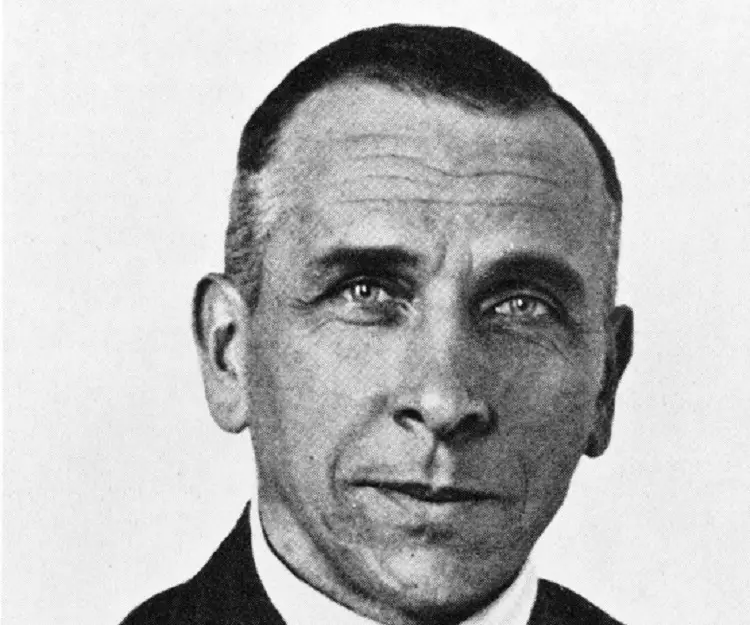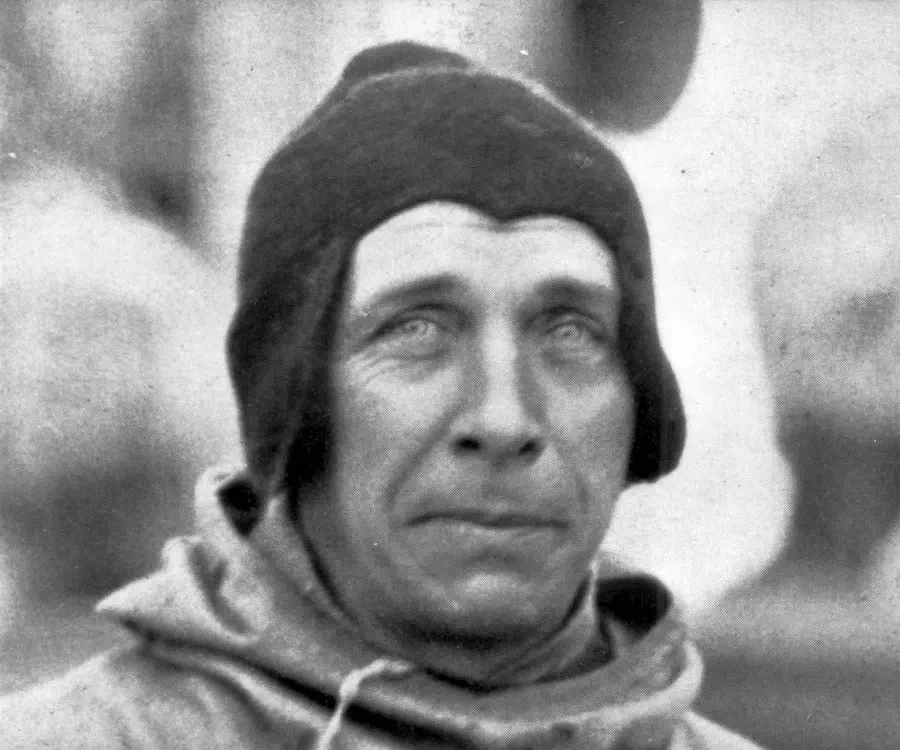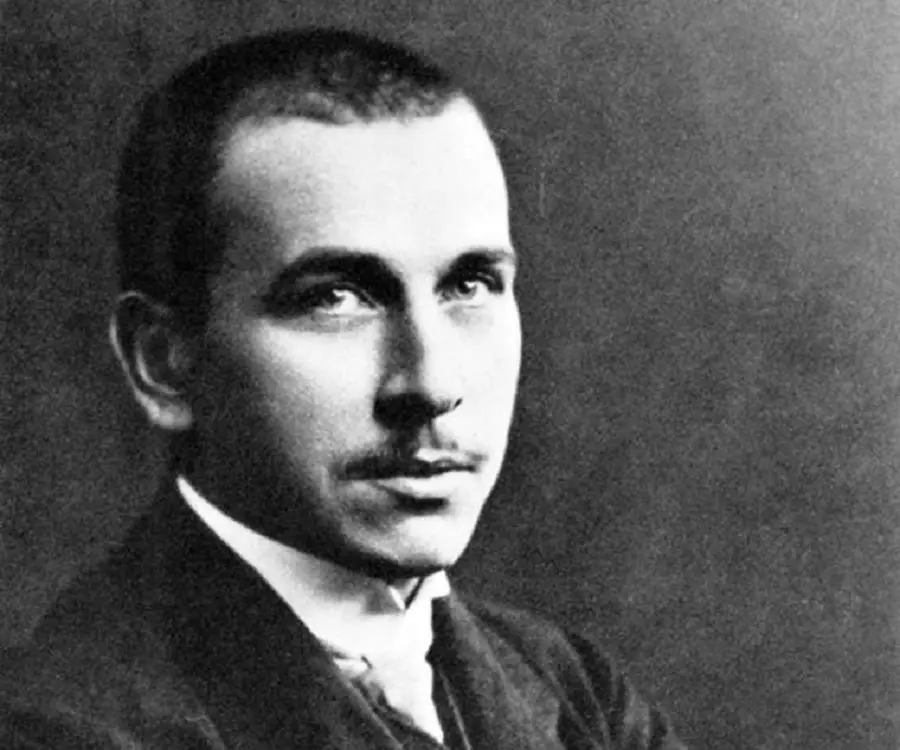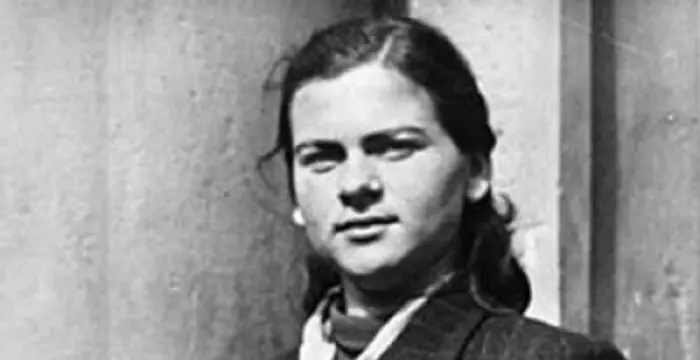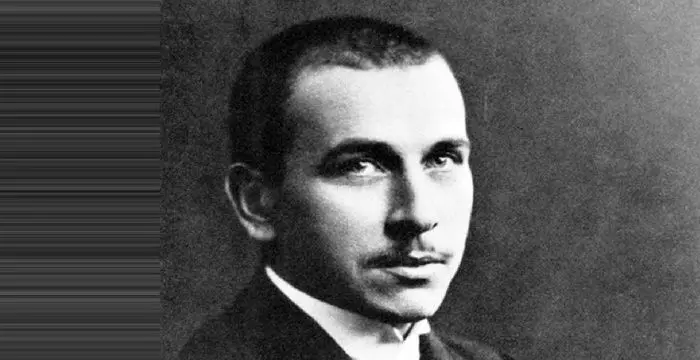
Alfred Wegener - Researcher, Timeline and Childhood
Alfred Wegener's Personal Details
Alfred Wegener was a renowned German geophysicist and meteorologists who is known for pioneering the ‘Continental Drift’ theory
| Information | Detail |
|---|---|
| Birthday | November 1, 1880 |
| Died on | November 1, 1930 |
| Nationality | German |
| Famous | Scientists, Researcher |
| Spouses | Else Koppen Wegener |
| Siblings | Kurt Wegener, Tony Wegener |
| Known as | Alfred Lothar Wegener |
| Childrens | Elsa Wegener |
| Universities |
|
| Birth Place | Berlin |
| Religion | Lutheranism |
| Gender | Male |
| Father | Richard Wegener |
| Mother | Anna Wegener |
| Sun Sign | Scorpio |
| Born in | Berlin |
| Famous as | Researcher |
| Died at Age | 49 |
// Famous Researcher
Michael Porter
Michael Porter is an economist, researcher, author, advisor, speaker and teacher. This biography profiles his childhood, career, academic contribution, works, life, achievements and timeline.
Richard Axel
Richard Axel is Nobel Prize winning American scientist, well-known for his scientific work pertaining to ‘olfactory receptors’. Read this biography to learn more about his childhood, life, works, achievements and timeline.
Christiane Nüsslein-Volhard
Christiane Nusslein-Volhard is a famous Nobel Prize winning German biologist who studied genetic control of embryonic development in drosophila. Read on to know more about her childhood, career, profile and timeline
Alfred Wegener's photo
Who is Alfred Wegener?
Alfred Wegener, who is considered as one of the founding father of a major scientific breakthrough of the 20th century, was a renowned German geophysicist and polar researcher. His theory on Continental Drift stirred a revolution among the scientific community as it invalidated the findings of past hundreds of years. This determined scientist did not let the initial ostracism prove a hindrance and published his theories in his book ‘The Origin of Continents and Oceans’. One of the reasons behind rejection of his theories was his background in astronomy. Though he pursued professional courses in astronomical sciences he embarked on a career in meteorology with his brother Kurt Wegener. The two brothers penned history when they charted the longest continuous air balloon flight for study of upper atmosphere. This inquisitive mind also embarked on many scientific explorations to the Arctic and studied the atmosphere and air current. He also published the first textbook in meteorology ‘Thermodynamics of the Atmosphere’ and was quite a popular teacher among his students because of his ability to explain complex concepts with relative ease. During his fourth expedition to the Greenland he embarked on a highly dangerous mission which ultimately led to his death and he unfortunately did not live long enough to receive the appreciation of scientific world for his commendable works
// Famous Scientists
Juliane Koepcke
Juliane Koepcke is a German-Peruvian biologist, who was the lone survivor among the 92 passengers and crew of the ill-fated LANSA Flight 508 that crashed in the Peruvian rainforest on 24 December 1971. Know more about her life in this biography.
Henry Cavendish
Henry Cavendish was a theoretical chemist and physicist, renowned for discovery of hydrogen and calculation of the mass of earth. To know more about his childhood, profile, timeline and career read on
Konstantin Tsiolkovsky
Konstantin Tsiolkovsky was a Russian rocket scientist and a pioneer of astronautics. This biography provides detailed information about his childhood, family, personal life, career, achievements, etc.
Childhood & Early Life
Alfred Wegner was born, in an affluent German family, in the capital city of Berlin, on November 1, 1880. He was the fifth child of churchman Richard and house-maker Anna Wegener. Richard taught classical languages in one of the most prestigious educational institute, ‘Evangelisches Gymnasium zum Grauen Kloster’, of Germany.
After receiving traditional education from the grammar school ‘Köllnisches Gymnasium’, in 1899 he pursued higher education from University of Berlin, Germany and then later in Austria, concentrating on physics, meteorology and astronomy.
The bright student then focussed on astronomy and interned at the renowned astronomical laboratory of Urania during 1902-03. He prepared his thesis for doctoral degree under the tutelage of astronomer Julius Bauschinger.
In 1905, he was awarded a Ph.D. by the ‘Friedrich Wilhelms University’ but Alfred’s interest in astronomy waned and he decided to pursue a career in the field of geophysics and meteorology.
Career
Wegner then worked together with his elder brother Kurt Wegner at a meteorological station and the two conducted studies on air movement. Using weather balloons the Wegner brothers created history in April 1906 when they made the longest hot air balloon flight of 52.5 hours.
This polar researcher embarked on his first expedition to the Arctic in 1906. The Danish meteorological expedition was spearheaded by Ludvig Mylius-Erichsen and Alfred studied the climate in the polar region using kites and weather balloons.
Though the expedition was a great learning experience for him but it also exposed him to the dangers of his profession when the team lost Ludvig and two other colleagues during the trip.
Upon his return from the Greenland expedition in 1908, Alfred took up a teaching position in the ‘University of Marburg’. At the institute, he utilised his experience of the Arctic exploration to explain difficult and complex concepts in applied astronomy and cosmic physics to the students in a simple manner. He was quite popular among the students for his succinct and concise lectures.
This talented paleoclimatologists published the first ever textbook on meteorology ‘Thermodynamik der Atmosphäre’ (Thermodynamics of the Atmosphere), in 1910. He included many of his findings of the Greenland exploration in the book.
From 1910-1912, Wegner researched on the theory of ‘Continental Drift’, which suggested that the existing continents were probably the constituent of a single super continent. The land masses are constantly floating on a fluid mantle towards and away from one another around the planet; which has resulted in their present day positions on the earth.
Alfred first has an inkling of the idea when he noticed the boundaries of South American and African continents which seemed to complement each other as pieces of jigsaw puzzle. To back his theory he studied rock samples and fossils in both the continents and compared geological data.
In January 1912, he proposed his ideas of continental drift to the scientific world and presented his discourse at the ‘Geological Association’ in Frankfurt and ‘Society for the Advancement of Natural Science’ in Marberg. Though he presented proof to back his theory, his ideas were met with criticism from the scientific community.
Later in 1912 he embarked on second expedition to Greenland but the small team fell short of food supplies and had to cut short their trip. He came back the following year and continued his teaching job.
With the advent of the World War I, he was inducted into the German army and his regiment faced severe action in Belgium. Alfred suffered multiple injuries and he was absolved from active service but he served in the weather department of the army.
During the same time he continued his work on ‘Die Entstehung der Kontinente und Ozeane’ (‘The Origin of Continents and Oceans’) and finally published the book in 1915.
Throughout the war this determined meteorologist brought out as many as twenty scientific papers; one of them even including his study on the Treysa meteorite.
During the period 1919-23, he was involved in the research for his book ‘Die Klimate der geologischen Vorzeit’ (‘The Climates of the Geological Past’), and a revised publication of his book ‘Origin of Continents and Oceans’.
After the war, Wegener moved with his family to Hamburg when he was appointed as a meteorologist by the German navy. It was in Hamburg in the year 1921 that he was employed at the University as a senior lecturer.
In 1924, the ‘University of Graz’ offered him the position of a professor in meteorology. He continued his assessment of the second Arctic expedition and also studied the science of tornadoes through the late 1920s.
In 1929, he brought out the fourth version of ‘Origin of Continents and Oceans’ and it was in the same year that he ventured on his third scientific expedition to the Arctic. During the expedition they tested the viability of the snowmobiles attached with propellers, for transportation.
In 1930, Wegener undertook the fourth expedition to Greenland with a fourteen member team. The other explorers under his guidance studied the Arctic weather and measured the thickness of ice sheet over Greenland.
Major Works
Though Alfred made many contributions to the scientific world in his role as a meteorologist but his most important contribution was the proposal of ‘Continental Drift’ theory. Though his ideas, that the present day continents were a part of a super continent and the land masses floated away from one another to their recent positions, were initially criticised but eventually went on to be accepted by the scientific community.
Personal Life & Legacy
Wegener was married to Else Köppen in 1913 and the couple resided in Marburg with their two daughters Sophie Käte and Lotte.
During the fourth expedition to Greenland in 1930, this famous scientific explorer led a team of thirteen local inhabitants of Greenland and his meteorologist Fritz Loewe, to provide supplies to a base station in Eismitte from the West camp base station, on dog sleds.
Braving extreme temperatures only three members out of the original fifteen member squad made to the Eismitte base camp. On the return journey to West camp, Wegener was accompanied by Rasmus Villumsen; the duo set out on dog sleds and used the dogs to feed themselves through the journey.
The duo never completed the journey and Wegener’s body was found buried by a search team, on May 12, 1931, en route West Camp from Eismitte. A pair of skis was used to distinguish the burial ground.
Apparently his grave was built by Villumsen, who then proceeded towards the West Camp but was never heard of again. Upon Alfred’s demise, his brother, Kurt Wegener, was made in charge of the expedition.
The famous geophysicist is the eponym for various celestial objects which include a crater on the Moon and one on the planet Mars, an asteroid. The peninsula where his graveyard was discovered is also named after this famous meteorologist.
The ‘Alfred Wegener Medal & Honorary Membership’ is awarded by the ‘European Geosciences Union’ to scientists who have made exceptional contribution in the field of earth, planetary and hydrological sciences.
Trivia
John Buchan based an episode, on the Wegener’s fourth and final Greenlandic expedition, in his novel ‘A Prince of the Captivity’
// Famous German peoples
Jordan Carver
Jordan Carver is a famous German model. Let’s take a close look at her personal life, including her age, career, net worth, achievements and some fun facts.
Jürgen Klopp
Jürgen Klopp is a German football manager, and a former professional football player. Check out this biography to know more about his childhood, family, personal life, etc.
Irma Grese
Irma Grese was a notorious German Nazi concentration camp guard during the Second World War. This biography profiles her childhood, life, horrifying acts, death and other facts.
Alfred Wegener biography timelines
- // 1st Nov 1880Alfred Wegner was born, in an affluent German family, in the capital city of Berlin, on November 1, 1880. He was the fifth child of churchman Richard and house-maker Anna Wegener. Richard taught classical languages in one of the most prestigious educational institute, ‘Evangelisches Gymnasium zum Grauen Kloster’, of Germany.
- // 1899After receiving traditional education from the grammar school ‘Köllnisches Gymnasium’, in 1899 he pursued higher education from University of Berlin, Germany and then later in Austria, concentrating on physics, meteorology and astronomy.
- // 1902The bright student then focussed on astronomy and interned at the renowned astronomical laboratory of Urania during 1902-03. He prepared his thesis for doctoral degree under the tutelage of astronomer Julius Bauschinger.
- // 1905In 1905, he was awarded a Ph.D. by the ‘Friedrich Wilhelms University’ but Alfred’s interest in astronomy waned and he decided to pursue a career in the field of geophysics and meteorology.
- // 1906This polar researcher embarked on his first expedition to the Arctic in 1906. The Danish meteorological expedition was spearheaded by Ludvig Mylius-Erichsen and Alfred studied the climate in the polar region using kites and weather balloons.
- // Apr 1906Wegner then worked together with his elder brother Kurt Wegner at a meteorological station and the two conducted studies on air movement. Using weather balloons the Wegner brothers created history in April 1906 when they made the longest hot air balloon flight of 52.5 hours.
- // 1908Upon his return from the Greenland expedition in 1908, Alfred took up a teaching position in the ‘University of Marburg’. At the institute, he utilised his experience of the Arctic exploration to explain difficult and complex concepts in applied astronomy and cosmic physics to the students in a simple manner. He was quite popular among the students for his succinct and concise lectures.
- // 1910This talented paleoclimatologists published the first ever textbook on meteorology ‘Thermodynamik der Atmosphäre’ (Thermodynamics of the Atmosphere), in 1910. He included many of his findings of the Greenland exploration in the book.
- // 1910 To 1912From 1910-1912, Wegner researched on the theory of ‘Continental Drift’, which suggested that the existing continents were probably the constituent of a single super continent. The land masses are constantly floating on a fluid mantle towards and away from one another around the planet; which has resulted in their present day positions on the earth.
- // 1912Later in 1912 he embarked on second expedition to Greenland but the small team fell short of food supplies and had to cut short their trip. He came back the following year and continued his teaching job.
- // Jan 1912In January 1912, he proposed his ideas of continental drift to the scientific world and presented his discourse at the ‘Geological Association’ in Frankfurt and ‘Society for the Advancement of Natural Science’ in Marberg. Though he presented proof to back his theory, his ideas were met with criticism from the scientific community.
- // 1913Wegener was married to Else Köppen in 1913 and the couple resided in Marburg with their two daughters Sophie Käte and Lotte.
- // 1915During the same time he continued his work on ‘Die Entstehung der Kontinente und Ozeane’ (‘The Origin of Continents and Oceans’) and finally published the book in 1915.
- // 1919 To 1923During the period 1919-23, he was involved in the research for his book ‘Die Klimate der geologischen Vorzeit’ (‘The Climates of the Geological Past’), and a revised publication of his book ‘Origin of Continents and Oceans’.
- // 1921After the war, Wegener moved with his family to Hamburg when he was appointed as a meteorologist by the German navy. It was in Hamburg in the year 1921 that he was employed at the University as a senior lecturer.
- // 1924In 1924, the ‘University of Graz’ offered him the position of a professor in meteorology. He continued his assessment of the second Arctic expedition and also studied the science of tornadoes through the late 1920s.
- // 1929In 1929, he brought out the fourth version of ‘Origin of Continents and Oceans’ and it was in the same year that he ventured on his third scientific expedition to the Arctic. During the expedition they tested the viability of the snowmobiles attached with propellers, for transportation.
- // 1930In 1930, Wegener undertook the fourth expedition to Greenland with a fourteen member team. The other explorers under his guidance studied the Arctic weather and measured the thickness of ice sheet over Greenland.
- // 1930During the fourth expedition to Greenland in 1930, this famous scientific explorer led a team of thirteen local inhabitants of Greenland and his meteorologist Fritz Loewe, to provide supplies to a base station in Eismitte from the West camp base station, on dog sleds.
- // 12th May 1931The duo never completed the journey and Wegener’s body was found buried by a search team, on May 12, 1931, en route West Camp from Eismitte. A pair of skis was used to distinguish the burial ground.
// Famous Scorpio Celebrities peoples
Teddy Zois
Teddy Zois is an American Musical.ly star and social media personality. Let’s have a look at his family and personal life including age, date of birth, net worth, and fun facts.
Kyla Cole
Kyla Cole is a Slovak glamour model and former television presenter. This biography profiles her childhood, life, modeling career, achievements and timeline.
Dominic Tracy
Dominic Tracy is an American YouTube Star. Let’s take a look at his family & personal life including age, date of birth, girlfriends, net worth, and fun facts.
Paige Mackenzie Hyland
Paige Mackenzie Hyland is an American dancer, fashion model and social media personality. Let’s take a look at her family & personal life including age, birthday, net worth, boyfriends, and fun facts.
Devin Gordon
All about American Pop singer and internet celebrity Devin Gordon, including his age, birthday, family life, girlfriends, net worth, and some fun facts.
Cody Ko
Cody Ko is a Canadian Vine sensation and YouTube personality. Check out this biography to know about his childhood, family life, achievements and fun facts about him.
Alfred Wegener's FAQ
What is Alfred Wegener birthday?
Alfred Wegener was born at 1880-11-01
When was Alfred Wegener died?
Alfred Wegener was died at 1930-11-01
Where was Alfred Wegener died?
Alfred Wegener was died in Clarinetania, Greenland
Which age was Alfred Wegener died?
Alfred Wegener was died at age 49
Where is Alfred Wegener's birth place?
Alfred Wegener was born in Berlin
What is Alfred Wegener nationalities?
Alfred Wegener's nationalities is German
Who is Alfred Wegener spouses?
Alfred Wegener's spouses is Else Koppen Wegener
Who is Alfred Wegener siblings?
Alfred Wegener's siblings is Kurt Wegener, Tony Wegener
Who is Alfred Wegener childrens?
Alfred Wegener's childrens is Elsa Wegener
What was Alfred Wegener universities?
Alfred Wegener studied at 1905 - Humboldt University of Berlin
What is Alfred Wegener's religion?
Alfred Wegener's religion is Lutheranism
Who is Alfred Wegener's father?
Alfred Wegener's father is Richard Wegener
Who is Alfred Wegener's mother?
Alfred Wegener's mother is Anna Wegener
What is Alfred Wegener's sun sign?
Alfred Wegener is Scorpio
How famous is Alfred Wegener?
Alfred Wegener is famouse as Researcher



